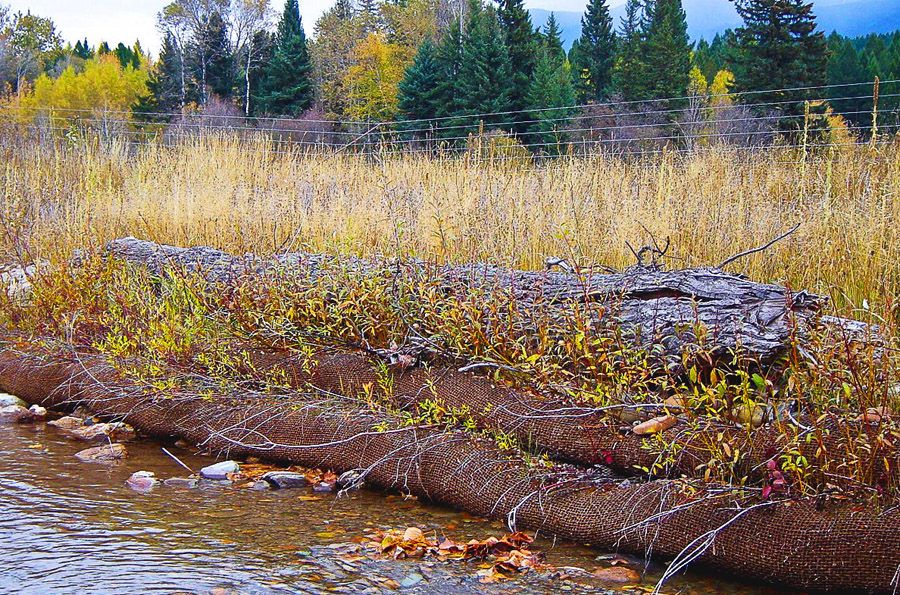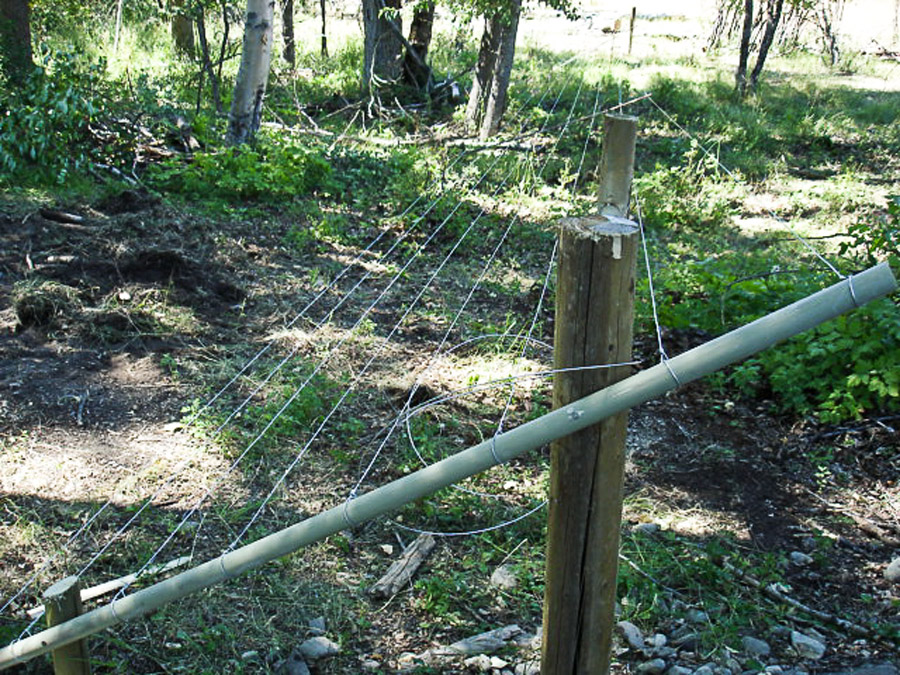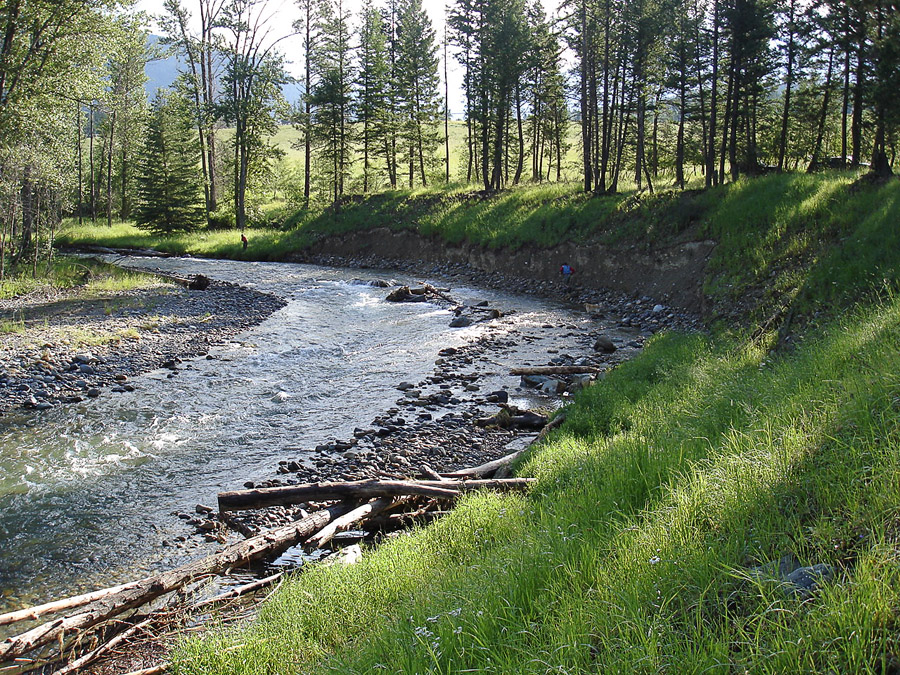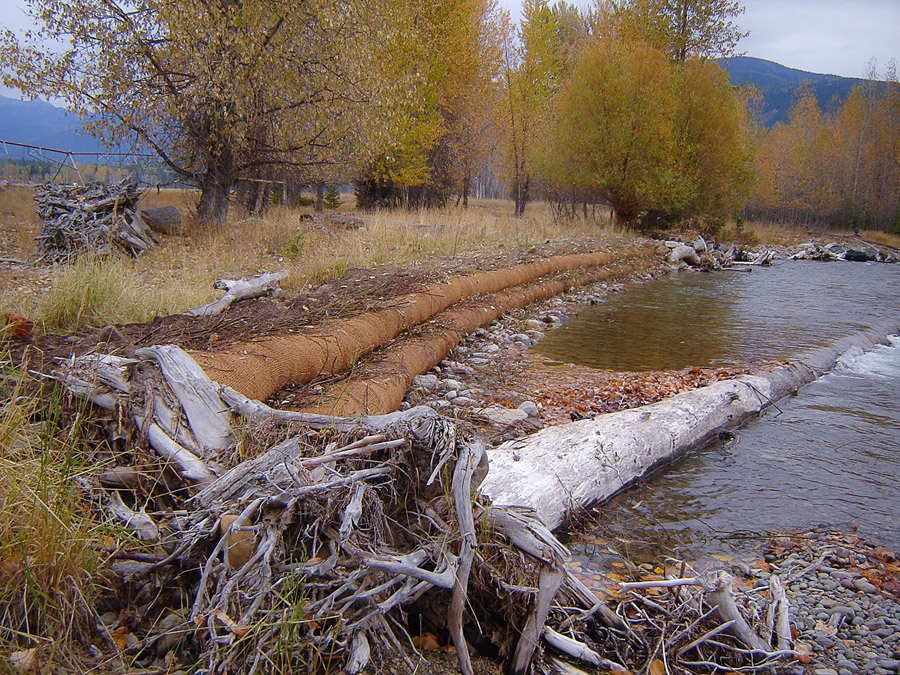Project Summary
Geum Environmental Consulting, Inc. designed and implemented a multi-phase riparian revegetation and monitoring plan for a one-mile long reach of Grave Creek located near Eureka, Montana for the Kootenai River Network and Montana Fish, Wildlife and Parks.
This revegetation plan is associated with a channel restoration project completed by the Kootenai River Network and River Design Group of Whitefish, Montana. Geum has worked closely with hydrologists at River Design Group and other project partners since 2005 to determine revegetation priorities, implement revegetation treatments, monitor treatment effectiveness and adapt treatments based on the results of monitoring. Revegetation treatments were designed specifically to address riparian revegetation limiting factors on Grave Creek.
View Project Reports
Factors limiting riparian vegetation goals for the project reach include:
- Intense browse pressure resulting in a lack of structurally diverse plant communities and limiting natural recruitment of woody vegetation
- Streambank, floodplain, and channel instability resulting in lack of stable areas suitable for the establishment of desired plant communities
- Competition from weed species
- Lack of floodplain microtopography resulting in limited microsites for seed recruitment and establishment
Treatments implemented between 2005 and 2010 to address these limiting factors have included:
- Construction of an eight strand slant rail electric fence along the upper portion of the reach to limit browse by cattle, deer and other ungulates.
- Bioengineering treatments such as vegetated soil lifts, coir log fascines, and buried willow fascines to create stable areas for streambank and floodplain woody vegetation to establish.
- Construction of floodplain swales, large woody debris piles, and floodplain grading to restore connectivity between the channel and floodplain and create protective sites for seed to be trapped and establish.
- Installation of container plants within constructed floodplain swales and on select floodplain benches.
- Seeding of constructed swales and floodplain surfaces using a diverse native grass, forb and shrub seed mix.
- Integrated weed management.








